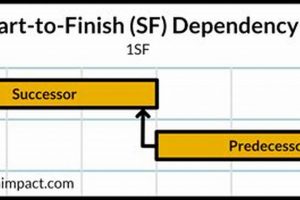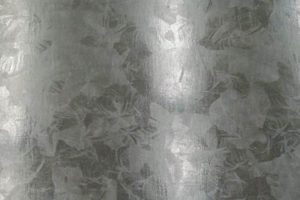The presence of elevated mineral content in water, particularly calcium and magnesium, can affect the results of dishwashing processes. This condition, frequently characterized by spotting or filming on cleaned items, arises from the interaction of these minerals with detergent components. For example, glassware may exhibit a cloudy appearance, and silverware may develop noticeable water spots, even after a complete wash cycle.
The implications of this mineral concentration extend beyond mere aesthetics. It can lead to increased detergent consumption as more product is needed to counteract mineral interference. Furthermore, the persistent buildup of mineral deposits can eventually diminish the efficiency of dishwashing appliances. Historically, addressing this issue has involved water softening techniques or the use of specialized detergents formulated to chelate these minerals.
Subsequent discussion will address methods for mitigating these effects, focusing on appliance maintenance, appropriate detergent selection, and the potential benefits of water treatment systems for improving dishwashing performance. Further analysis will delve into the long-term economic and environmental considerations related to various mitigation strategies.
Mitigation Strategies for Mineral-Rich Water Conditions
The following are practical strategies to address issues arising from the mineral composition of water impacting dishwashing and cleaning outcomes.
Tip 1: Optimize Detergent Selection: Employ detergents specifically formulated for challenging water conditions. These detergents often contain chelating agents designed to bind to minerals, thereby minimizing their interference with the cleaning process. Refer to detergent packaging for suitability claims.
Tip 2: Increase Detergent Dosage (With Caution): If the detergent formulation is not explicitly designed for mineral-rich environments, a marginal increase in dosage may improve performance. However, adhere strictly to the appliance manufacturer’s guidelines to avoid potential damage and excessive residue.
Tip 3: Utilize Rinse Aids: Rinse aids minimize surface tension, promoting water sheeting and reducing the formation of water spots. Verify compatibility with the specific appliance and detergent in use.
Tip 4: Elevate Water Temperature (Within Limits): Higher water temperatures generally improve detergent effectiveness. Consult the appliance’s operating manual to determine the maximum safe and effective temperature setting.
Tip 5: Perform Regular Appliance Maintenance: Regularly clean the dishwasher according to the manufacturer’s recommendations. Scale buildup can significantly reduce cleaning efficacy. Consider using commercial dishwasher cleaners or vinegar rinses.
Tip 6: Consider Water Softening Systems: For persistent and severe issues, installation of a whole-house water softening system is a viable long-term solution. This investment necessitates careful evaluation of cost, maintenance requirements, and potential environmental impacts.
Tip 7: Manual Drying of Dishes: Drying dishes immediately after the cycle completes will prevent mineral rich water from creating residue on the dishes.
Implementing these strategies can significantly improve dishwashing outcomes in environments where the water supply contains high mineral concentrations, leading to cleaner items and extending the lifespan of cleaning appliances.
The subsequent section will discuss the broader implications of water quality on household management and appliance longevity, transitioning into the article’s concluding remarks.
1. Mineral Deposition Prevention
The mitigation of mineral deposition is a crucial aspect of addressing the challenges presented by elevated mineral content in water, particularly concerning dishwashing and appliance performance. Preventing the buildup of calcium and magnesium carbonates directly impacts the aesthetic and functional outcomes of cleaning processes.
- Scale Inhibitors in Detergents
Detergent formulations containing scale inhibitors, such as polyphosphates or citrates, actively sequester mineral ions, preventing their precipitation and subsequent adherence to surfaces. For instance, the inclusion of sodium citrate in a dishwashing detergent reduces the formation of calcium carbonate deposits on glassware, thereby maintaining clarity and preventing unsightly filming. Improper or no inhibitors will make mineral deposition will be more likely
- Rinse Aid Mechanisms
Rinse aids reduce surface tension, promoting rapid water sheeting and minimizing the formation of droplets. By preventing water droplets from lingering on surfaces, rinse aids diminish the opportunity for minerals to precipitate out of the water and leave behind deposits. Consider the difference between a glass air-dried after washing and one dried immediately with a cloth; the air-dried glass often exhibits water spots due to mineral deposition.
- Water Softening Technologies
Ion exchange water softeners replace calcium and magnesium ions with sodium ions, effectively reducing the concentration of scale-forming minerals. This process is critical in areas with extremely hard water, where even specialized detergents and rinse aids may be insufficient to prevent mineral buildup. A household using softened water will experience significantly less scale accumulation in appliances and on fixtures.
- Appliance Maintenance Protocols
Regular descaling of dishwashers using vinegar or commercial descalers removes existing mineral deposits, preventing them from accumulating and impeding appliance performance. Neglecting this maintenance leads to reduced cleaning efficiency, increased energy consumption, and potential damage to heating elements and other components. A properly maintained dishwasher will operate more effectively and require less detergent.
These strategies, when implemented effectively, reduce or eliminate the negative consequences of mineral deposition. The long-term result is enhanced cleaning outcomes, reduced detergent consumption, and extended appliance lifespans, directly addressing the challenges posed by hard water conditions and the quality of the wash.
2. Detergent formulation efficacy
The effectiveness of a detergent formulation is intrinsically linked to the characteristics of the water used in the cleaning process. In regions with elevated mineral content in water, standard detergents frequently exhibit diminished performance. The presence of calcium and magnesium ions interferes with the surfactant action, inhibiting the detergent’s ability to emulsify fats and suspend particulate soil. This interference results in incomplete cleaning, streaking, and the deposition of a mineral film on cleaned surfaces. Therefore, the efficacy of a detergent formulation is not solely determined by its chemical composition but also by its capacity to function effectively in the presence of these mineral challenges.
Certain detergent formulations are specifically engineered to mitigate the adverse effects of mineral-rich water. These formulations incorporate chelating agents, such as citrates or polyphosphates, which bind to calcium and magnesium ions, rendering them less reactive and preventing their interference with surfactant activity. For example, a detergent containing a high concentration of sodium citrate will generally outperform a standard detergent in mineral-rich water conditions, resulting in improved cleaning performance and reduced mineral deposition. Furthermore, enzymes added to detergents, designed for optimal pH, can be rendered ineffective due to high alkalinity of hard water.
In summary, the efficacy of a detergent formulation in locations with elevated mineral content in water hinges on its ability to counteract the inhibitory effects of these minerals. Formulations incorporating chelating agents and a balanced composition are essential for achieving optimal cleaning performance and minimizing the undesirable effects associated with mineral deposition. The selection of an appropriate detergent formulation represents a critical factor in securing satisfactory cleaning results in such settings.
3. Rinse aid utilization
The strategic application of rinse aids represents a crucial element in mitigating the adverse effects of mineral-rich water on dishwashing outcomes. These specialized formulations alter surface tension, thereby influencing water behavior during the drying phase and significantly impacting the final appearance of cleaned items.
- Reduction of Water Spotting
Rinse aids function by reducing the surface tension of water, promoting more uniform sheeting and drainage. This minimizes the formation of water droplets that, upon evaporation, leave behind mineral deposits commonly manifested as unsightly spots and streaks on glassware and other surfaces. The presence of rinse aid ensures the water exits the surface, taking minerals with it.
- Enhancement of Drying Efficiency
By facilitating more complete water removal, rinse aids accelerate the drying process. This is particularly beneficial as it reduces the time during which mineral-rich water has the opportunity to evaporate and deposit residues on cleaned items. Speeding up the drying process leaves less time for unwanted particles to form.
- Prevention of Mineral Film Formation
In situations of mineral content in water, the residual water film remaining after the wash cycle can contribute to the gradual buildup of a persistent mineral film on dishes and glassware. Rinse aids mitigate this effect by reducing the film’s thickness and promoting its removal, thereby preserving the clarity and shine of cleaned surfaces.
- Improved Overall Aesthetic Results
The combined effects of reduced spotting, enhanced drying, and film prevention result in a noticeable improvement in the overall appearance of washed items. Glassware appears clearer, silverware retains its luster, and plasticware is less prone to discoloration. This contributes to a perception of cleanliness and enhances the satisfaction derived from the dishwashing process.
In summary, the utilization of rinse aids constitutes an effective and relatively simple strategy for counteracting the negative consequences of elevated mineral content in water on dishwashing results. Their surface tension-reducing properties promote more efficient water removal, thereby minimizing spotting, streaking, and film formation, ultimately enhancing the aesthetic outcome of the cleaning process and protecting the condition of cleaned items. This represents an integral part of the approach to washing solutions
4. Appliance Maintenance Importance
The significance of routine appliance maintenance is amplified in environments where water contains elevated mineral concentrations. The presence of these minerals accelerates wear and diminishes the operational efficiency of various household appliances, most notably dishwashers and washing machines. Consistent maintenance practices are therefore critical to prolonging appliance lifespan and sustaining optimal performance under such conditions.
- Scale Removal and Prevention
Mineral-rich water promotes the formation of scale deposits on heating elements, spray arms, and internal components. Scale reduces heating efficiency, restricts water flow, and can ultimately lead to component failure. Regular descaling with vinegar or specialized cleaners removes accumulated deposits, restoring optimal performance and preventing premature breakdown. Failure to address scale buildup reduces cleaning efficacy and increases energy consumption.
- Filter Cleaning and Replacement
Appliances equipped with filters are particularly susceptible to clogging in regions where the water supply contains high levels of sediment and minerals. Clogged filters restrict water flow, reduce cleaning effectiveness, and can place undue strain on pumps and motors. Routine cleaning or replacement of filters ensures unrestricted water flow and protects internal components from damage. Examples include dishwasher filters that trap food particles and washing machine lint traps that accumulate fabric fibers and mineral deposits.
- Seal and Hose Inspection
Mineral-rich water can accelerate the degradation of rubber seals and hoses within appliances, leading to leaks and water damage. Routine inspection of these components allows for early detection of cracks, swelling, or other signs of deterioration. Prompt replacement of compromised seals and hoses prevents water damage, maintains optimal water pressure, and extends the lifespan of the appliance. For example, checking the door seal on a dishwasher prevents water from leaking onto the floor.
- Spray Arm Maintenance
The effectiveness of dishwashers and washing machines relies on the unobstructed flow of water through spray arms. Mineral deposits can clog spray arm nozzles, resulting in uneven water distribution and reduced cleaning performance. Regular cleaning of spray arms, either manually or through the use of specialized cleaning agents, ensures optimal water distribution and maximizes cleaning efficacy. A common sign of clogged spray arms is streaks on dishes or unevenly washed clothing.
The ramifications of neglected appliance maintenance in the presence of elevated mineral content in water extend beyond mere inconvenience. Reduced cleaning performance, increased energy consumption, and premature appliance failure contribute to higher operating costs and increased environmental impact. Therefore, a proactive approach to appliance maintenance is essential for mitigating the adverse effects of finish hard water, preserving appliance functionality, and minimizing long-term expenses.
5. Water treatment systems
The presence of elevated mineral content in water directly contributes to the effects often observed post-dishwashing, affecting cleanliness and causing residue. Water treatment systems represent a proactive solution, addressing the root cause by altering the water’s composition before it enters the cleaning process. These systems range from point-of-use filters to whole-house water softeners, each designed to reduce the concentration of calcium and magnesium ions the primary drivers behind water-related spotting and filming.
Water softening, a common water treatment method, employs ion exchange to replace calcium and magnesium with sodium ions. This process mitigates the formation of mineral scale within dishwashers, preventing the reduction of cleaning efficiency and extending the appliance’s lifespan. Reverse osmosis systems offer an alternative, removing a broader spectrum of contaminants, including minerals. A household in a region known for its water hardness may invest in a water softener to protect appliances and improve water quality for various uses, including dishwashing. The effects become visible, with dishes appearing cleaner and glassware showing less spotting post-wash.
The strategic implementation of water treatment systems provides a targeted and effective solution to the challenges presented by water hardness. The result is enhanced cleaning performance, minimized appliance maintenance, and an improvement in the overall quality of water utilized throughout the household. However, the selection of a water treatment system must be informed by factors such as water hardness levels, household water consumption patterns, and budget considerations, ensuring the chosen system adequately addresses the specific issues at hand while offering long-term benefits.
Frequently Asked Questions
This section provides answers to commonly asked questions regarding the impact of elevated mineral content in water on household cleaning processes and appliance performance.
Question 1: What is the primary cause of spotting and filming on dishes after washing, particularly in areas known for “finish hard water” issues?
The primary cause is the presence of dissolved calcium and magnesium ions. These minerals react with detergents, forming insoluble compounds that deposit on surfaces. This effect is exacerbated when wash cycles are shorter, or not hot enough to break bonds of minerals.
Question 2: Does the elevated mineral content in water affect more than just the aesthetic appearance of dishes and glassware?
Yes. The buildup of mineral scale can reduce the efficiency of appliances like dishwashers and washing machines. Scale accumulation on heating elements increases energy consumption and can eventually lead to premature appliance failure. If left long enough without remediation, cleaning will not occur as expected.
Question 3: Are all detergents equally effective in mitigating the effects of elevated mineral content in water?
No. Detergents formulated for mineral-rich water contain chelating agents that bind to calcium and magnesium ions, preventing them from interfering with the cleaning process. Standard detergents may be less effective in such environments.
Question 4: Beyond specialized detergents, what other steps can be taken to improve dishwashing results in the presence of mineral content?
Utilizing rinse aids, increasing water temperature (within appliance limits), regularly descaling appliances, and considering water softening systems are all viable strategies to enhance dishwashing performance.
Question 5: How can the presence of mineral buildup in dishwashers be identified?
Signs of mineral buildup include reduced cleaning performance, white or chalky deposits on internal components, and decreased water flow. Regular inspection of the appliance can reveal these issues early on.
Question 6: Is installing a water softening system a practical solution for all households affected by elevated mineral content in water?
While effective, a water softening system represents a significant investment. The decision to install such a system should be based on factors such as water hardness levels, household water consumption, and long-term cost considerations. Alternatives, such as detergent selection and appliance maintenance, may offer more cost-effective solutions for some households. Installation is not always needed for some people.
In summary, effectively addressing the problems posed by mineral-rich water involves understanding its impact, employing appropriate cleaning strategies, and implementing preventative maintenance measures.
This concludes the discussion. Further exploration of specific appliance maintenance techniques may be found in the relevant operating manuals.
Conclusion
The preceding analysis has detailed the multifaceted challenges presented by elevated mineral content in water, commonly understood as “finish hard water,” particularly concerning dishwashing and appliance longevity. Key considerations include appropriate detergent selection, the strategic use of rinse aids, rigorous appliance maintenance, and the potential implementation of water treatment systems. Addressing the presence of elevated mineral content in water involves not merely cosmetic improvements but also ensuring the operational efficiency of essential household appliances and potentially mitigating long-term costs associated with repairs and replacements.
Effective management of the problems stemming from “finish hard water” necessitates a comprehensive understanding of its effects and the proactive application of appropriate mitigation strategies. Continued vigilance regarding water quality and the condition of household appliances remains paramount to securing optimal cleaning performance and preserving the functionality of these vital systems. Future advancements in detergent technology and water treatment methods may offer even more effective solutions, warranting ongoing evaluation of available options.







